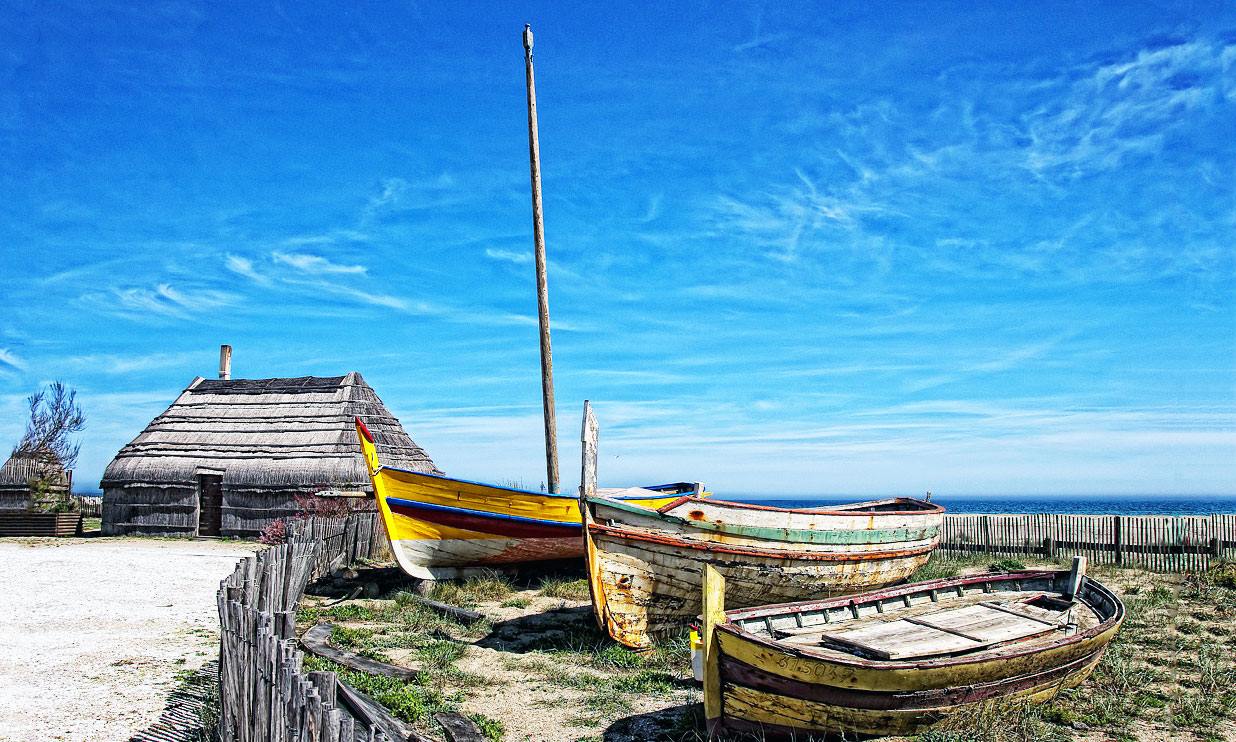COASTAL DRIVES IN THE P-O
Beginning with the Côte Rocheuse at Cerbère on the Spanish border and ending on the Côte Sablonneuse just before Leucate in the Aude, the coastline of the Pyrénées Orientales varies from rugged rocky coves to long lazy sandy beaches, offering all manner of opportunities for sea sports and seaside related relaxations.

Why not take a few days out along the coast, beginning in Argelès sur Mer? First of the sandy coast towns, Argelès village itself is slightly inland with a charming centre, a XVI century church and a market on Fridays.
Argelès-sur-Mer is a lively seaside town whose beautiful long and sandy beach is backed by a promenade with well kept gardens and villas.

Loads of boutiques, fast food restaurants, bars and a sparkling night scene ensure that it is popular with holiday makers of all ages, particularly the young.
Hard to imagine how it must have been in 1939 at the time of the Retirada when thousands of Spanish refugees fled Franco’s Spain and camped in freezing conditions on the sands. Small wonder they were so swift to volunteer to serve in the French army in the autumn of that unfortunate year.
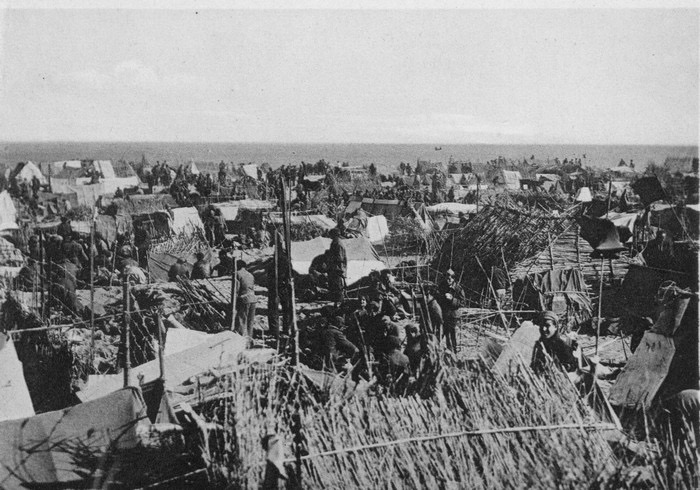
Argelès Port, built in the late 70s and early 80s is now an established yachting and pleasure boat port with all the amenities a yachtsman could require.

Between Port Argelès and the Cote Vermeille is Le Racou. At the beginning of the XX century just a collection of fishermen’s huts and the odd beach hut built on the sand, it has grown into a much sought after seaside village.
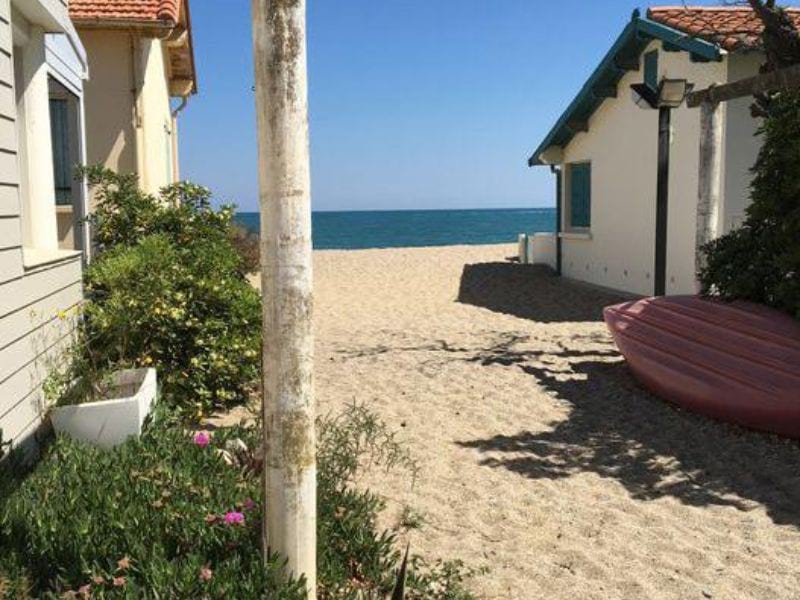
The old huts change hands seldom and, when they do, it is for large amounts of euros. It is the last stretch of sand before the rocky coast begins, the sea gets deep quickly, the swimming is easy and the whole place has a 50’s California feel about it. You half expect to see Ava Gardner washed up on the shore.

Between St Cyprien and Argelès is Aqualand, an extremely popular watery play-park and there are also numerous riding ranches, an adventure park, canyoning and karting in the area.
Also between the two towns, at the mouth of the river Tech, is a large nature reserve called Mas Larrieu. Sand dunes, reeds and rushes are home to many birds and insects. Various gulls, herons and bee-eaters abound, it is very beautiful and a discovery footpath with informative notices leads to a picnic place. Guided visits are arranged by the tourist office from April to September.
However you should be aware that it is an area much favoured by the gay community so the wild life can sometimes take a surprisingly human form.

St Cyprien has miles of golden sands, a port so full of yachts the masts almost obscure the palm trees, golf, restaurants, bars, casino, discothèque, quayside fishing boats, sporting opportunities galore, an old village centre with excellent art galleries and a botanical garden.
“Le Jardin des Plantes des Capellans” next to the sports complex on Rue Verdi has palms and a bambouserie, and a collection of over four hundred roses as well as many local Mediterranean plants through which white peacocks strut.
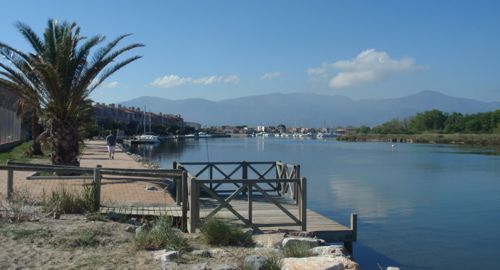
It is to the Grand Stade des Capellans that the whole family can go for a whole summer of sporting and less-sporting-more-artistic entertainment. There are seventeen out door tennis courts, and a further four indoors.
There is squash, swimming, body building, a fitness gym, a sauna, a spa, massage. You can join for an hour, a day, a week, a year… and you can leave your children or grandchildren in their capable hands and have some grown up time to yourselves !
There is a market on Fridays on the port and Thursdays in the village.
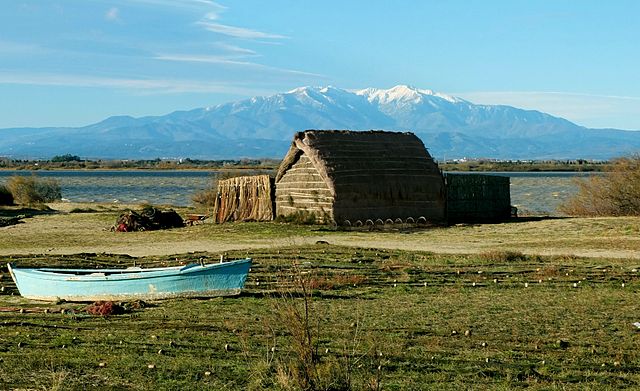
Canigou, magnificent in the background and, in the foreground, carefully preserved fishermen’s reed huts, separate Canet from St Cyprien. Bird-watching and windsurfing opportunities abound as well as walking and cycling through the surrounding nature reserve.

Canet’s long and gloriously sandy beach is backed by numerous cafes, bars, restaurants and towering blocks of predominantly holiday apartments. The yachting harbour and an interesting aquarium are at the opposite end of the beach from the lagoon.
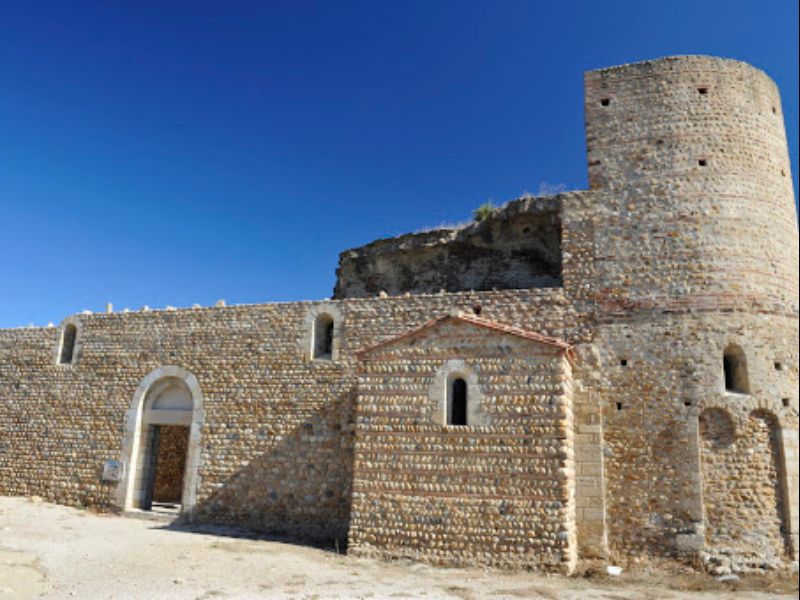
North of the town, in the attractive old village is the ruined Chateau Vicomtal dating from the XI century. Between the mouth of the river Têt at Canet and the mouth of the river Agly at Toreilles the land is flat, often sandy and reed covered. Lots of horses and riding establishments line the road, lots of fields of vegetables as well.
Toreilles has a charming old centre with twisting lanes and attractive stone houses. Its beach is long and sandy and, unlike Canet, there are no tall apartment blocks. In summer it is a popular buckets and spades family beach with a few handy cafés and shops.

Take a long, long walk to the mouth of the Agly where the river water meets the waves of the sea, a paradise for birds and fishermen and a beautiful walk in any season.
Between Port Barcares and Port Leucate, beached on the sands is the Lydia, a 1930 ferry that, after years of service on the high seas, has come to rest and been transformed into a casino, restaurant and nightclub. Given that, in Catalan, Le Barcares means “a dry spot to which boats can be dragged”, it seems a very suitable resting place.
The lagoon of Leucate straddles both the Aude and the Pyrenees Orientales, eels and oysters are farmed in its waters and flamingos can often be seen.
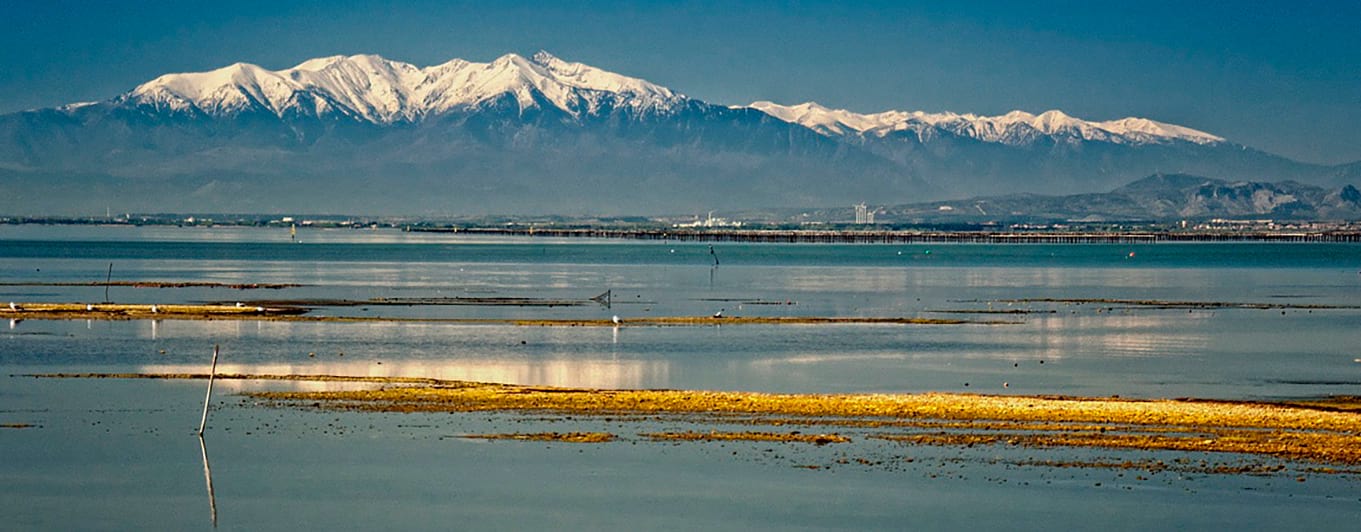
Definitely the place to go for oyster lovers. Here they are available for buying or tasting, fresh, delicious and not expensive. Where the lagoon drains into the sea, well signposted off the D627 is the Centre Conchylicole. The oysters are raised in the lagoon and brought to the huts that line the channel to be packed and sold. Tanks bubble with water full of oysters, small tables are crowded with people enjoying them while sipping white wine.
